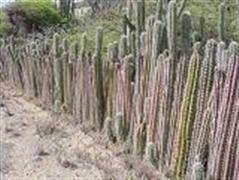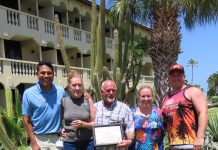(Oranjestad) – When off-roading in inland Aruba, you may notice some cacti hedges around various properties or lined up by certain pathways. These man-made hedges are called “trankera” and play an important role in maintaining our flora and fauna.
The trankera dates to colonialism, where settlers established several ‘cunucu’ (farm) on the island. People either used stone walls or trankera as a fence to ward off strangers and wild animals that can feed on the cunucu vegetation or cattle.
Nowadays, trankeras are less common, and those that still stand are often not maintained. On the surface this seems like a bad development, however this proved to be beneficial for our flora and fauna. Naturally developed flora around the hedges offers more shelter for fauna. Another aspect is the propagation process. When pruning hedges, flowers and seeds were removed, which limits propagation to a minimum.
So, though trankeras don’t play that big of a role in Aruba’s agriculture anymore, our environment still reaps the benefits of these long-standing natural structures.


















